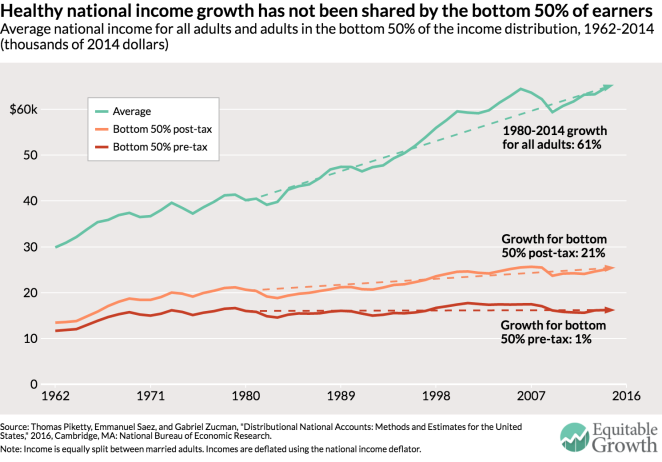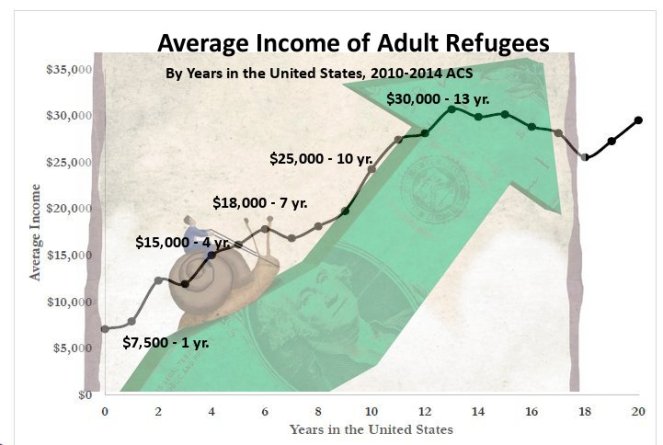A number of scholars have observed declining incomes for recent refugee arrivals, in comparison to earlier waves (during the 1980s and 1990s). The Migration Policy Institute found that refugees who arrived in the U.S. between 1995 and 2000 had median household incomes equivalent to 62 percent of native born U.S. citizens. But refugees who had been in the U.S. for five years or less in 2009-11 had median incomes equal to only 45 percent of U.S. born. “This gap suggests that the income gains observed among earlier arrivals may not be replicated for those who arrived more recently,” concludes the Migration Policy Institute report.
Refugee incomes climb slowly but steadily over time. During a Nov. 15, 2016 brown bag presentation at the USCCB/MRS, researchers of the University of Notre Dame’s Wilson Sheehan Lab for Economic Opportunities (LEO) reported that average incomes for adult refugees peaked at $30,000 after 13 years of residence. Starting out with a meager $7,500 annual income at the end of their first year in the U.S., adult refugees earn $15,000 after 4 years in America. Refugees’ average incomes rise to $18,000, after 7 years, and continue climbing to $25,000 after 10 years of residence. Interestingly, the the same trend has been observed for refugees resettled to Canada.
The LEO research team, including Dr. William Evans and his research assistant Danny Fitzgerald, looked at roughly 18,000 refugees who entered the country between 1990 and 2014. Fitzgerald combed through American Community Survey data to locate people entering the country as refugees, and then tracked employment, education, dependence on social programs, tax history and other factors. The researchers’ first major finding related to the cost of resettlement, which was discussed in the first blog post of this three-part series. The second blog post looked at LEO findings in relation to the socio-economic adjustment struggles of refugee teenagers.
Of course, refugees are only a small subset of low-income Americans struggling to make ends meet. A major new publication by the renown international economists, Thomas Piketty, Emmanual Saez and Gabriel Zucman, finds that the average income of the bottom 50 percent of individual earners in the U.S. stagnates at about $16,000 per adult (after adjusting for inflation). One might argue that refugees are doing relatively well, considering the overall wage stagnation trend for low-income Americans.
Excerpt from Piketty, Saez and Zucman: […] our data show that the bottom half of the income distribution in the United States has been completely shut off from economic growth since the 1970s. From 1980 to 2014, average national income per adult grew by 61 percent in the United States, yet the average pre-tax income of the bottom 50 percent of individual income earners stagnated at about $16,000 per adult after adjusting for inflation. In contrast, income skyrocketed at the top of the income distribution, rising 121 percent for the top 10 percent, 205 percent for the top 1 percent, and 636 percent for the top 0.001 percent.
Source: Bill Evans and Danny Fitzgerald, The Social and Economic Assimilation of Refugees: Evidence from the American Community Survey. University of Notre Dame’s Wilson Sheehan Lab for Economic Opportunities (LEO). Brown bag presentation at the United States Conference of Bishops/Migration and Refugee Services. Nov. 15, 2016


